(25139 products available)












































































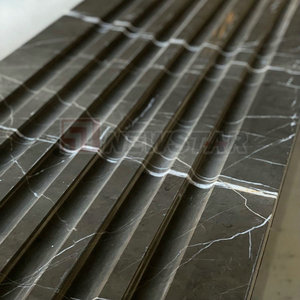
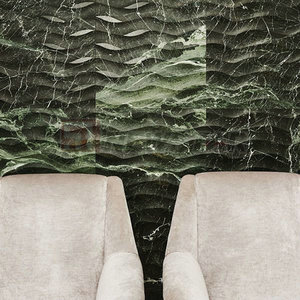







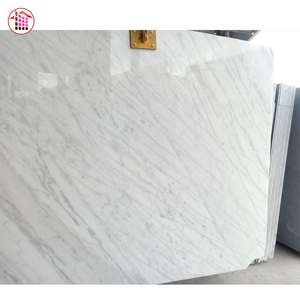


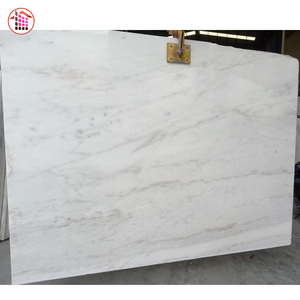
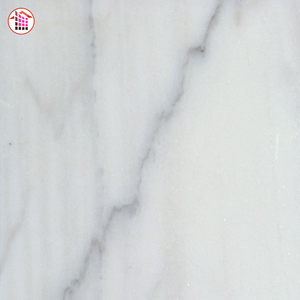
























































There are different types of white polished marble, as explained below, and each has unique characteristics.
White Carrara Marble
This marble is one of the most famous and comes from Carrara, Italy. It has a soft and gray veining pattern that gives it a calm and elegant appearance. Because of its unique beauty, this marble is often used for sculptures and buildings, such as the famous David statue by Michelangelo. White Carrara marble is also a popular choice for countertops, floors, and walls. It is loved for its beautiful and timeless appearance.
Calacatta White Marble
This type of marble is also from Italy. Unlike Carrara, it has a white background with bold and thick gray or gold veins. This makes it look luxurious and dramatic. Calacatta marble is often used in high-end projects like luxury hotels and villas to give a feeling of great elegance and opulence. Its striking appearance makes it a favorite choice for places where a powerful visual impact is wanted.
Statuario White Marble
Statuario marble is another type from Carrara, Italy. It is rarer than the other types. Statuario has a white background and very prominent and dramatic veining. This marble is mainly used in luxurious and high-end applications, such as custom-made furniture and exclusive interior designs. It provides an appearance of great elegance and sophistication.
Bianco Puro Marble
Bianco Puro marble is a white marble with very few veins, if any at all. Its pure white color gives it a clean and bright look. This marble is used in modern designs where a simple and fresh appearance is wanted. It is also used for countertops, floors, and walls in places that want a fresh and clean look.
White Macaubas Quartzite
This type of white marble is different from the others because it is a quartzite, not marble. However, it is often classified as marble due to its similar appearance. White Macaubas has a white background with blue and gray veins. It is very strong and more durable than marble. Because of its strength, it is perfect for kitchen countertops where a lot of work is done. Its unique color and pattern make it a good choice for both functional and beautiful applications.
Honed white marble is a popular choice for homeowners looking to renovate their homes for many reasons. Its features and functions make it an excellent choice for an array of applications. Its features and functions include the following.
Non-reflective finish
One of the main features of white marble is its non-reflective finish. Unlike other types of marble, this one has a flat, non-reflective finish that absorbs light rather than reflects it. This makes it an excellent choice for uses where a subtle, understated look is desired. For example, in a bathroom, a honed white marble can give off a calm and serene vibe that is more desirable than the flashy, over-the-top look of highly polished marble. In addition, the non-reflective finish helps to hide imperfections in the surface, making it easier to maintain a smooth and consistent appearance.
Veining
Another important feature of honed white marble is its veining. The subtle veining adds depth and interest to the surface, giving it a unique and sophisticated look. Different types of honed white marble have different kinds of veining. Some have long, thin black and white marble veins, while others have short, thick veins. The veining can be more or less pronounced, depending on the type of marble. In general, darker-veined marbles tend to look more dramatic, while lighter-veined marbles have a more subtle appearance.
Low sheen
Another important feature of white honed marble is its low sheen. The finish of this marble is not completely flat, but it has a very subtle sheen that gives it a bit of depth and dimension. This low sheen helps to diffuse light across the surface, preventing it from appearing too dull or flat. In addition, the low sheen makes it easier to clean and maintain, as it does not show dirt and stains as easily as high-sheen finishes do.
White marble with a grayish background or veining is one of the most popular colors because it is neutral and goes with any space. The cool, grayish veins give depth and interest to the surface without being too dramatic or overbearing. This honed marble is used in many high-end residential and commercial projects. Some applications of white honed marble are:
When considering whote honed marble for countertops, some factors need to be considered. These factors will help one to choose the right product that will suit the customers' needs.
Color and veining
Each white marble has different types of veining. Some types of white honed marble have less veining while others have more. The amount of veining affects the appearance of the marble. A customer may want a marble with less veining or one with more veining. Customers should look at the different types of white honed marble to see what suits their taste.
Durability and hardness
Marble is a soft stone. It is important to know that some types of white honed marble are more prone to scratches and stains. Consider the use of the marble. If it is for a high-traffic area, choose a type of marble that is durable.
Size and thickness
White honed marble comes in different sizes and thicknesses. Consider the space where the marble will be installed. Also, consider the budget when choosing the size and thickness of the marble. Larger and thicker marbles are more expensive than smaller and thinner ones.
Matching with the surroundings
It is important to choose a white honed marble that will match the surrounding elements. This includes furniture, fixtures and flooring. A marble that complements the other elements will create a beautiful and cohesive space.
Supplier's expertise
Choose a supplier who has a good knowledge of white honed marble. Such a supplier will provide guidance and expert advice. They will help customers to select the right marble that will meet their needs and preferences.
Q1: Is white honed marble more prone to staining than polished marble?
A1: While honed marble is not more prone to staining, it requires proper sealing to prevent stains. Regular sealing helps protect the stone from potential stains caused by spills or heavy use.
Q2: Can scratches be removed from honed marble surfaces?
A2: Minor scratches on honed marble can be removed using a honing compound and a soft cloth. Deeper scratches may require professional restoration using specialized tools and compounds.
Q3: What type of sealant should be used on white honed marble?
A3: A penetrating sealant is recommended for white honed marble. It protects the stone without altering its natural appearance. Look for water-based or solvent-based penetrating sealants suitable for marble.